This article was medically reviewed by Theodore Leng, MD. Dr. Leng is a board certified Ophthalmologist and Vitreoretinal Surgeon and an Assistant Professor of Ophthalmology at Stanford University. He completed his MD and Vitreoretinal Surgical Fellowship at Stanford University in 2010. Dr. Leng is a Fellow of the American Academy of Ophthalmology and the American College of Surgeons. He is also a member of the Association for Research in Vision and Ophthalmology, the Retina Society, the Macula Society, the Vit-Buckle Society, as well as the American Society of Retina Specialists. He received the Honor Award by the American Society of Retina Specialists in 2019.
There are 15 references cited in this article, which can be found at the bottom of the page.
wikiHow marks an article as reader-approved once it receives enough positive feedback. This article has 13 testimonials from our readers, earning it our reader-approved status.
This article has been viewed 369,504 times.
You need to take care of your eyes, and that might mean wearing glasses. The most common vision problems are nearsightedness (or shortsightedness), farsightedness (or long-sightedness), astigmatism and presbyopia. Many people suffer from vision problems, but put off going to the optometrist or ophthalmologist, or don't go at all. If you find that your eyesight seems to be deteriorating you should book an appointment as soon as possible. As well as diminished vision, there are a number of other indicators that you might need glasses.
Steps
Assessing your Short and Long Distance Vision
-
1Find out if you have blurred close-up vision. Blurred close-up vision is an indicator of farsightedness (also known as hyperopia). If you find it hard to focus on something that is close to your eyes you may have hyperopia. There is no single distance at which an object becomes blurry that equates to hyperopia.[1]
- The extent of your hyperopia influences your ability to focus on close-up objects, so the further away you have be to focus on something, to more pronounced you far-sightedness.
- Having to sit further away from your computer or holding a book at arm's length are common indicators.
-
2Determine if you have difficulty with reading. If you are used to doing a lot of up-close work, such as drawing, sewing, writing, or working on a computer, and are finding it harder to focus on the task, this can also be a symptom of presbyopia, which is a type of farsightedness caused by loss of elasticity in the eye muscles. It is common to develop presbyopia as we get older.
- You can check this simply by holding a book in front of you and reading it normally. If you are holding it more than ten or twelve inches away you may have presbyopia.
- If you find yourself moving the book further and further away from your eyes to focus on the words, this could be presbyopia.
- Often reading glasses will help with this.
- Presbyopia typically develops during the ages of 40 and 65.
Advertisement -
3Consider whether distant objects appear blurred. If you find increasingly that distant object appear to you as blurred, but nearby objects are clear, you may have nearsightedness (myopia). Myopia typically starts to develop around puberty, but can occur at any time in life. Like hyperopia, myopia is a question of degrees. But if you can read a newspaper fine, but struggle to read the board from the back of class, or find yourself sitting closer and closer to the TV, this could be it.[2]
- There is evidence that children who spent more time doing close tasks, such as reading, are more likely to develop myopia.
- Environmental factors are less significant than genetics, however.[3]
-
4Ask yourself if you have difficulty seeing objects both close-up and far-away. Instead of having difficulty seeing close-up or far-away objects, you might have a tough time focussing on either of them. If this is the case, there is a good chance that you have an astigmatism.[4]
Being Aware of Blurring, Squinting, Aches and Pains
-
1Find out if you experience blurred vision. If you have episodes when you experience blurred vision, this should be taken very seriously. It could be an indicator of a broader health problem and you should arrange to see your doctor immediately. If the blurred vision comes more rarely or is limited to one eye, make an appointment with your optometrist or ophthalmologist.
- Blurred vision means experiencing a lack of sharpness and fine detail when you look at something.
- Consider if this is just for objects close-up, far-away, or both.
-
2Determine if you squint to see clearly. If you find yourself spending a lot of time squinting and narrowing your eyes to focus in on something and see it clearly, this can be a symptom of an eye problem. Try to be aware of how often you find yourself squinting involuntarily, and go to your eye doctor for a diagnosis.[5]
-
3Consider if you experience double vision. Double vision can be caused by a wide variety of things from your muscles to your nerves. But it could indicate an eye problem that might be corrected with glasses. Whatever the cause, double vision should be taken seriously and you should contact your doctor quickly.[6]
-
4Consider if you are experiencing headaches or eyestrain. If you suffer sore eyes, or regular headaches this could be an indicator of an eye problem. Eyestrain or a headache after doing close work or reading can indicate presbyopia or hyperopia.[7]
- It can only be properly tested for by an optometrist or ophthalmologist, so you need to make an appointment for a test.
- An eye doctor will be able to prescribe you the right glasses for your condition.
Understanding How Your Response to Light Can Indicate Sight Problems
-
1Find out if you have trouble seeing in the dark. If you find that you are having a particularly difficulty seeing at night, this can indicate an eye problem. Poor night vision can also be a symptom of cataracts, so if you do notice an appreciable difference in your night vision you should certainly visit an eye doctor.[8]
- You might realise you are beginning to have trouble driving at night, or can't see objects in the dark that other people can see.
- Other indicators include, struggling to see stars at night or negotiate dark rooms, such as a movie theatre.
-
2Consider whether you are having difficulty adjusting between light and dark surroundings. The time it takes us to adapt to changes in light and dark surroundings generally increases as we get older. But if you notice that this adjustment is getting appreciably more difficult, it could signal an eye problem that may require glasses or contact lenses to correct, or could be related to a general medical condition.[9]
-
3Discover whether or not you see halos around lights. If you see bright circles that appear to surround a light source, such as light bulb, you may have an eye problem. Halos are a common symptom of cataracts, but can also indicate one of the four main eye problems. You should book an appointment with an eye doctor to get a diagnosis.[10]
-
4Decide if you have increased sensitivity to light. If you are experiencing a noticeably increased sensitivity to light you should book an appointment with your eye doctor. It can indicate a number of eye problems, so you will need to see an expert for a full diagnosis. If the change is sudden and dramatic, don't hesitate to make an appointment.
- If you find light hurting your eyes, or you have to squint or wince when you are in bright light then your sensitivity may have increased.[11]
Testing your Sight at Home
-
1Use some testing printouts. If you are experiencing the symptoms above you shouldn't waste time before booking an appointment with your eye doctor for a test. You can also, however, do some basic tests at home to try to measure your sight. Try by printing out the classic test page with letters of diminishing size from the internet.[12]
- After printing the test sheet, hang it at eye level in a well lit room.
- Stand ten-feet back and see how many letters you can read.
- Continue right to the bottom row, or as low as you can go, and write the number of the line where you could read most of the letters.
- Do this again, covering each eye at a time.
- The results vary by age, but older children and adults should be able to read the majority of the 20/20 line at the bottom.
-
2Try some online tests. As well as printable test sheets, there are a number of tests that you can do directly on your computer. Again, these are not exactly perfect, but they can give you a basic indication of how your eyes are.[13] You can find different tests for different eye problems, including colour blindness, and astigmatism.
- They will involve you looking at different images and shapes on your computer screen, and following the instructions to test your eyes.
- Remember that these are vague guides, and should not be treated as a substitute for the real thing.
-
3Go to see your eye doctor. Don't forget that if you are experiencing these symptoms you need to make an appointment with your eye specialist and have a full eye exam. Your optometrist or ophthalmologist will conduct a number of tests that will get to the bottom of your eye problems, and if you need glasses they will write you out a prescription. It might be intimidating or a little scary at first, but it's essential to caring for your eyes.[14]
- The eye doctor may use a number of instruments, aim bright lights into your eye, and have you try out a number of different lenses.
- You will have to read out letters from a test sheet with while different lenses are held in front of your eyes.
- Ophthalmologists and optometrists are both qualified to conduct eye evaluations.
-
4Know the next steps if you need glasses. After your eye exam you will be told if you need glasses or not. If so, you will be provided with a prescription. You can then take this to any optician's and choose which frames you want to get. Opticians are trained to help fit people for glasses.[15]
- Once you have chosen your frames you will have to wait a week or two for the frames to be fitted before you can pick them up.
Warnings
- In case of new glasses, make sure your lens do not reflect sun glare, as it can damage your eyes.⧼thumbs_response⧽
- There is also the option of contact lenses - if touching your eyes doesn't put you off!⧼thumbs_response⧽
- Remember, it's not to say that you will have to wear glasses 24/7! Sometimes only reading glasses are necessary, but this is something your optometrist will explain to you.⧼thumbs_response⧽
References
- ↑ http://www.mayoclinic.org/diseases-conditions/farsightedness/basics/definition/con-20027486
- ↑ http://www.nhs.uk/Conditions/Short-sightedness/Pages/Symptoms.aspx
- ↑ http://www.nhs.uk/Conditions/Short-sightedness/Pages/Causes.aspx
- ↑ https://www.aao.org/eye-health/diseases/what-is-astigmatism
- ↑ http://www.mayoclinic.org/diseases-conditions/farsightedness/basics/symptoms/con-20027486
- ↑ http://www.webmd.com/eye-health/double-vision-diplopia-causes-symptoms-diagnosis-treatment?page=2
- ↑ https://my.clevelandclinic.org/health/diseases/8577-presbyopia
- ↑ https://medlineplus.gov/ency/article/003039.htm
- ↑ https://www.scientificamerican.com/article/experts-eyes-adjust-to-darkness/
- ↑ http://www.webmd.com/eye-health/halos-and-glare-causes-prevention-treatment
- ↑ http://www.kellogg.umich.edu/patientcare/conditions/glaucoma.html
- ↑ https://www.visionsource.com/patients/free-eye-chart-download/
- ↑ http://www.preventblindness.org/test-your-eyes
- ↑ https://www.webmd.com/eye-health/what-to-expect-checkup-eye-exam-adults
- ↑ https://www.mayoclinic.org/tests-procedures/eye-exam/about/pac-20384655
About This Article
If you think you might need glasses, try to recognize if you squint when looking at things up close or far away, since squinting is a common sign of eyesight problems. You should also notice if things appear blurry when they’re really close or far away, which glasses can easily correct. Think about if you get headaches when reading or using the computer, which could be a sign that you need glasses. You can also print out an eye test at home and see how far you can read the text from to figure out if you need glasses or not. If you’re still not sure or you think you need glasses, visit an eye doctor for a professional test. For more tips from our Medical co-author, including how to do an eye test online, read on!

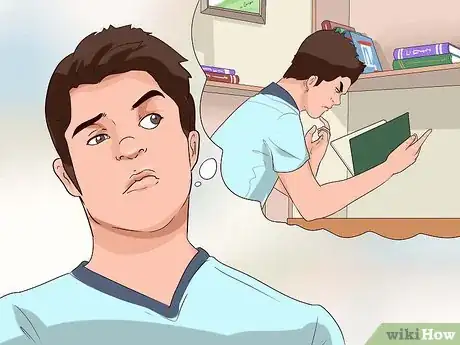


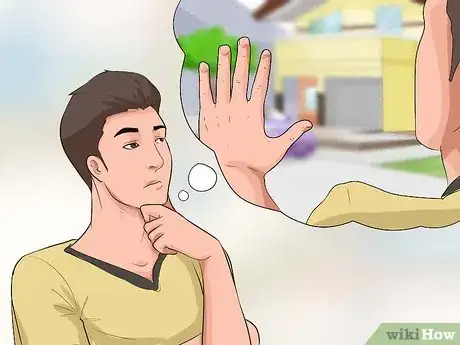
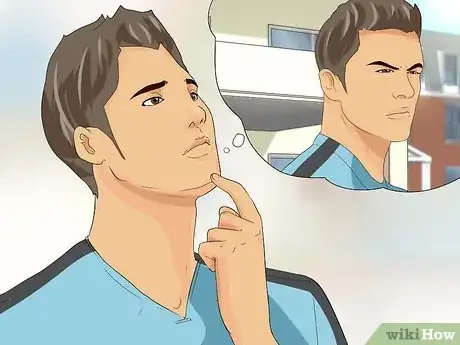


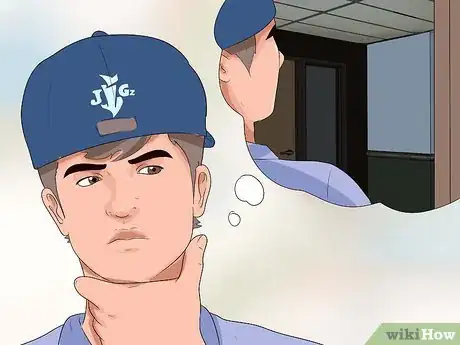

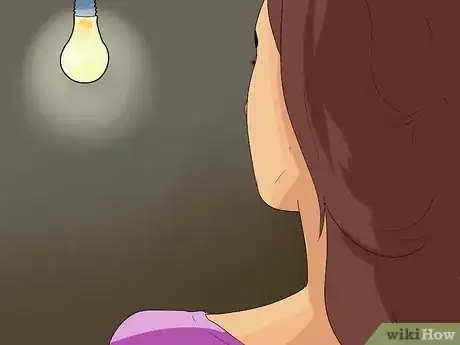


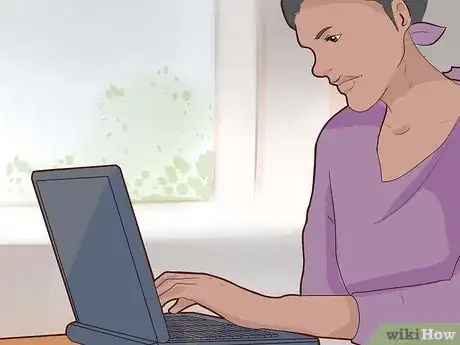
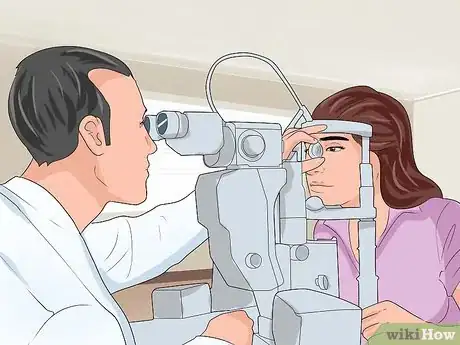
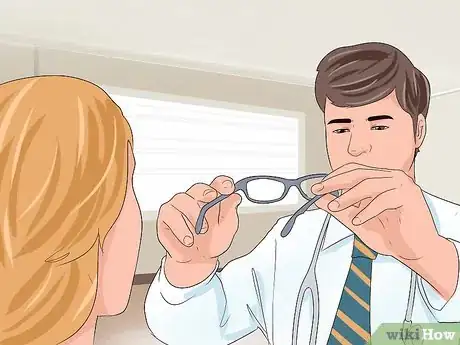
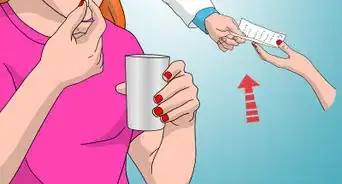
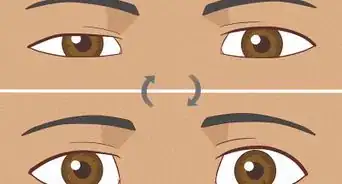
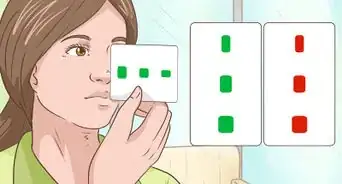
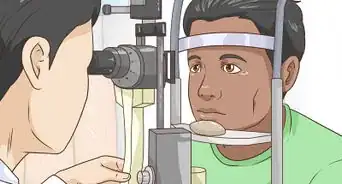

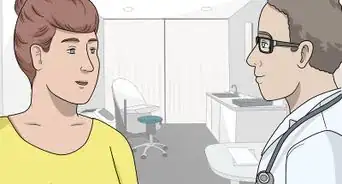
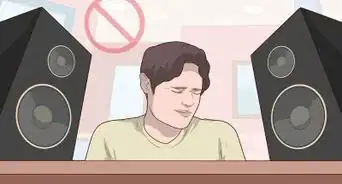
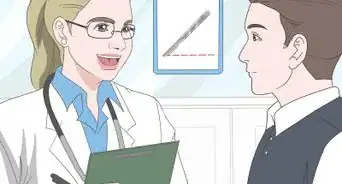
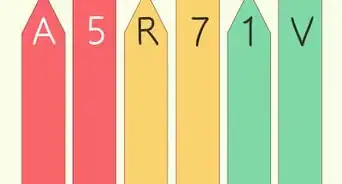
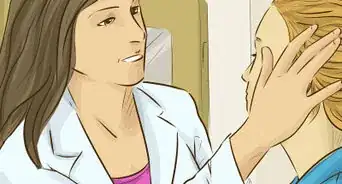
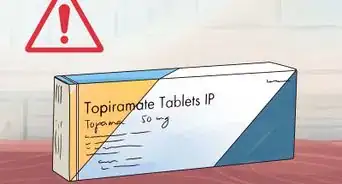
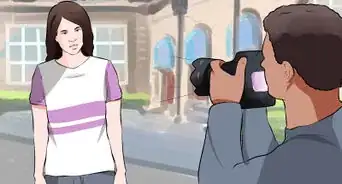
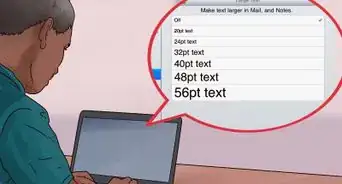










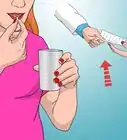
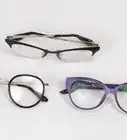
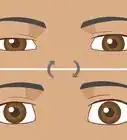





































Medical Disclaimer
The content of this article is not intended to be a substitute for professional medical advice, examination, diagnosis, or treatment. You should always contact your doctor or other qualified healthcare professional before starting, changing, or stopping any kind of health treatment.
Read More...